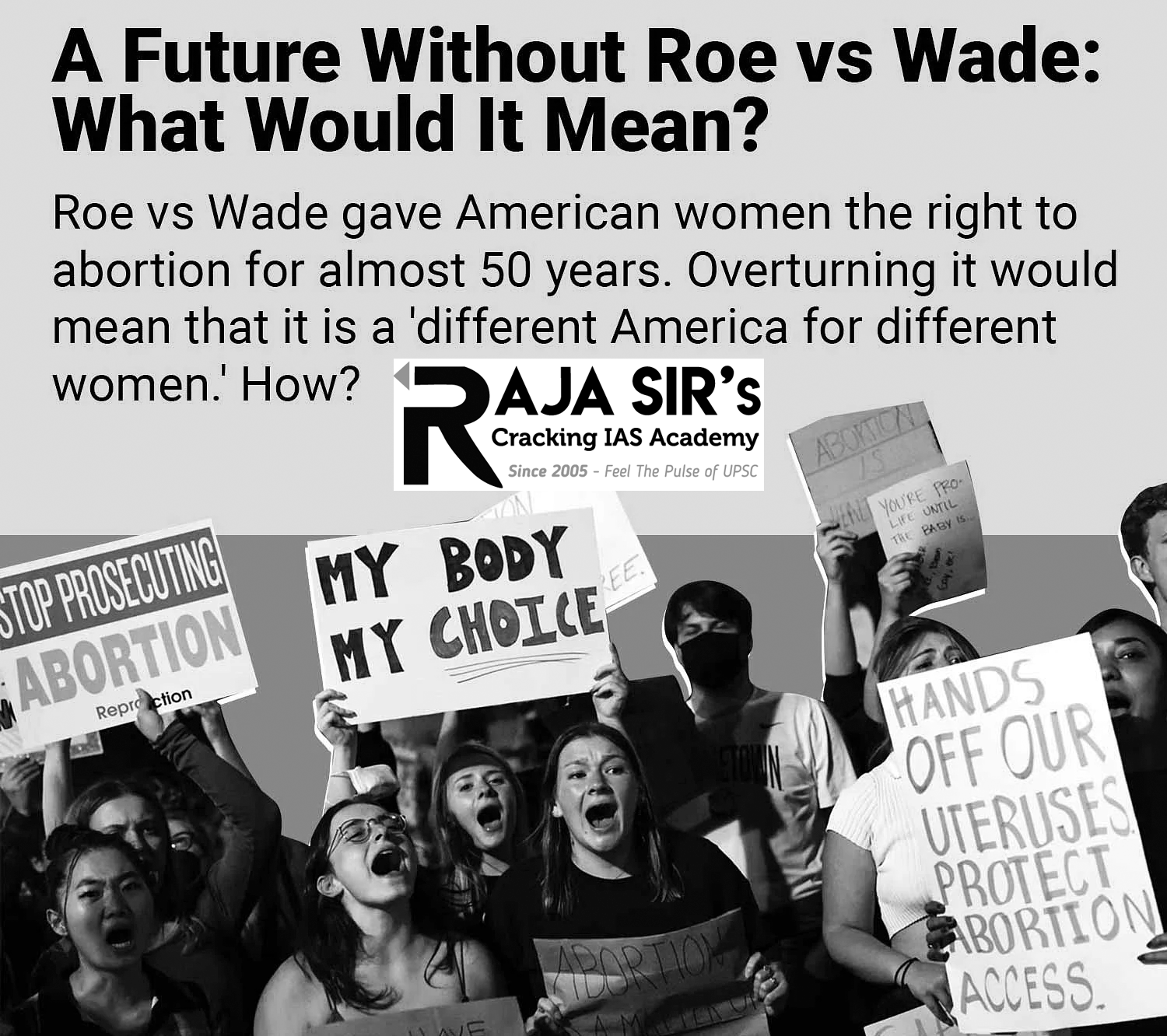- Home
- Prelims
- Mains
- Current Affairs
- Study Materials
- Test Series
What is Roe vs Wade case?
Recently, a leak by political journalism company Politico has revealed that, the US Supreme Court has decided to overturn Roe v. Wade, 1973 the court’s landmark 1973 judgment that made abortion a constitutional right.

Roe v. Wade Judgment
-
In 1973, in the landmark Roe vs Wade judgment, the Supreme Court of the United States made the right to abortion a constitutional right, establishing a benchmark for abortion laws across the world.
-
In this case, the US Supreme Court struck down laws that made abortion illegal in several states and ruled that abortion would be allowed up to the point of foetal viability, that is, the time after which a foetus can survive outside the womb.
-
Foetal viability was around 28 weeks (7 months) at the time of the Roe judgment, experts now agree that advances in medicine have brought the threshold down to 23 or 24 weeks (6 months or a little less).
-
-
Foetal viability is often seen as the point at which the rights of the woman can be separated from the rights of the unborn foetus.
-
Abortion laws across the world rely on this metric but those opposing abortions argue that this is an arbitrary timeframe that legislation and the court in Roe adopted.
Debate Regarding Abortion
-
The abortion debate is the ongoing controversy surrounding the moral, legal, and religious status of induced abortion.
-
In many western countries, the sides involved in the debate are the self-described "pro-choice" and "pro-life" movements.
-
Pro-choice emphasizes the woman''s choice whether to terminate a pregnancy.
-
On the contrary, the pro-life position stresses the humanity of both the mother and fetus, arguing that a fetus is a human person deserving of legal protection.
-
-
Each movement has, with varying results, sought to influence public opinion and to attain legal support for its position.
-
Many people believe that abortion is essentially a moral issue, concerning the beginning of human personhood, rights of the fetus, and bodily integrity.
Present case
-
The current case pertains to challenging the Mississippi law on abortion.
-
In 2018, the state of Mississippi banned most abortions after 15 weeks — much before fetal viability, and sooner than was allowed by Roe — throwing a direct challenge to the 1973 judgment.
-
In 2019, “heartbeat” abortion law was passed in Mississippi, an even more restrictive measure that banned most abortions once fetal cardiac activity could be detected — which is about six weeks.
-
The heartbeat law said that physicians who performed an abortion after a fetal heartbeat was detected could have their medical licenses revoked.
-
The law made no exceptions for pregnancies caused by rape or incest.
-
-
This law too was blocked by a district judge, and in February 2020, the 5th Circuit Court of Appeals in New Orleans agreed with the decision.
Impact of the Judgement
-
Since there is no federal law protecting the right to abortion in the US, the overturning of Roe would leave abortion laws entirely up to the states.
-
In essence, in overlooking the checks and balances of Roe vs Wade and in disabling personal agency, the matter will no longer be set within the paradigm of women’s rights.
-
It is also likely to impact the larger framework of human rights, tilting it away from the poor and the voice-less.
Abortion Laws in India
-
Under the Indian Penal Code, 1860, abortion remains a criminal offence under Section 312.
-
However, the Medical Termination of Pregnancy Act, 1971 (MTP) And its amendment simply provides an exception to the criminalization.
-
-
The MTP Act, 1971 allows abortion until 20 weeks of pregnancy.
-
Through an amendment in 2021, the ceiling for abortions was raised to 24 weeks, but only for special categories of pregnant women such as rape or incest survivors, that too, with the approval of two registered doctors.
-
In the case of fetal disability, there is no limit to the timeline for abortion, but that is allowed by a medical board of specialist doctors set up by the governments of states and union territories.









 Latest News
Latest News
 General Studies
General Studies